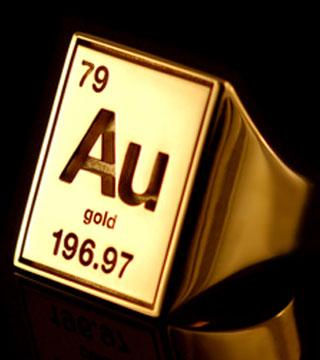|
|
Gold is metallic, with a yellow colour when in a mass, but when finely divided it may be black, ruby, or purple. It is the most malleable and ductile metal; 1 ounce (28 g) of gold can be beaten out to 300 square feet. It is a soft metal and is usually alloyed to give it more strength. It is a good conductor of heat and electricity, and is unaffected by air and most reagents. Gold is usually alloyed in jewellery to give it more strength, and the term carat describes the amount of gold present (24 carats is pure gold). It is estimated that all the gold in the world, so far refined, could be placed in a single cube 60 ft. on a side. The most common gold compounds are auric chloride (AuCl3) and chlorauric acid (HAuCl4). A mixture of one part nitric acid with three of hydrochloric acid is called aqua regia (because it dissolved gold, the King of Metals). It is unaffected by air and most reagents.
Applications Gold is used as buillon and in jewellery, glass and electronics. Jewellery consumes around 75% of all gold produced. Gold for jewellery can be given a range of hues depending on the metal with which is alloyed (white, red, blue, green etc.). Colloidal gold is added to glass to colour it red or purple, and metallic gold is applied as a thin film on the windows of large building to reflect the heat of the Sun's ray. Gold electroplating is used to in the electronic industry to protect their copper components and improve their solderability. |
